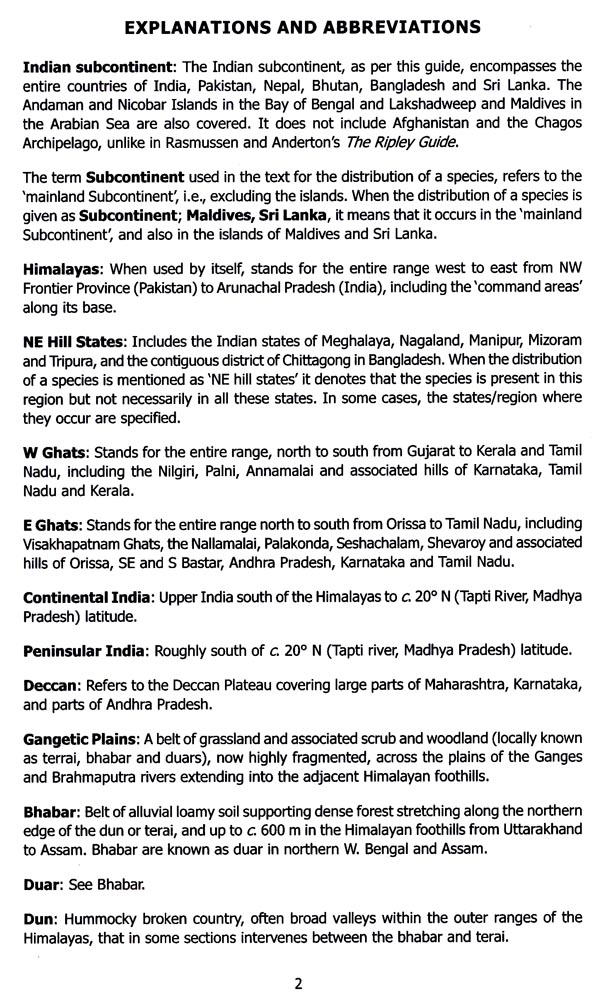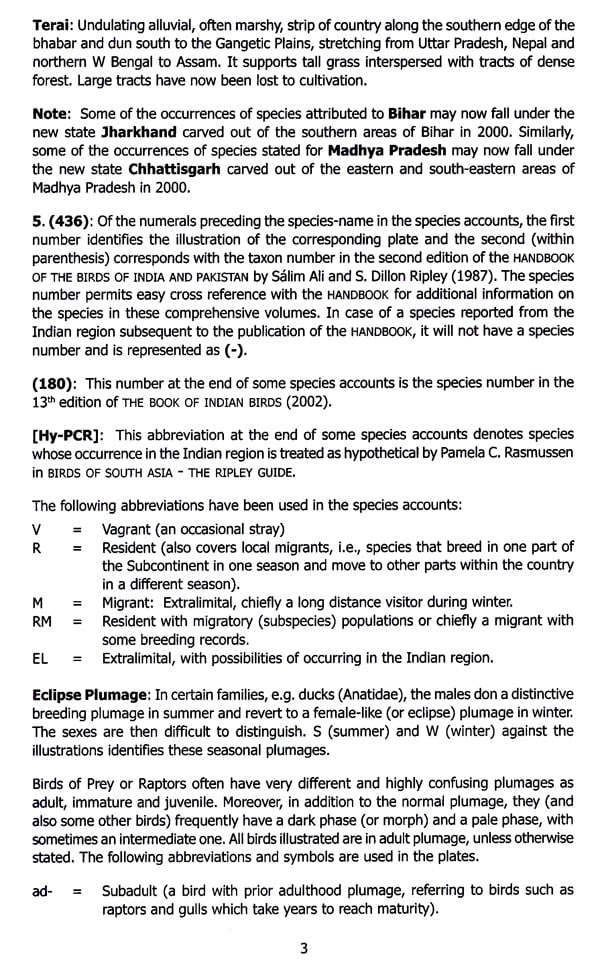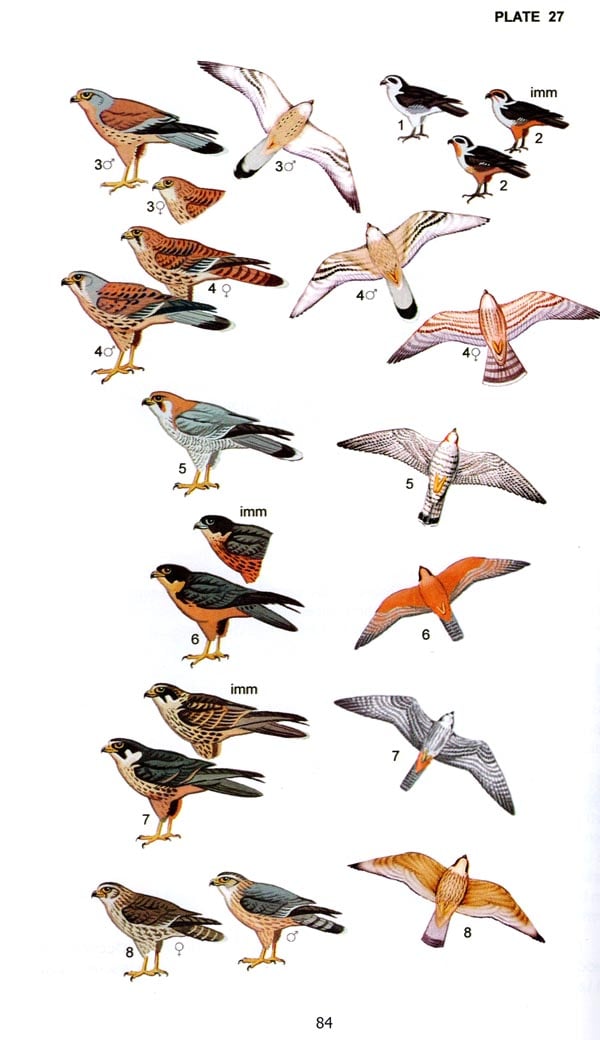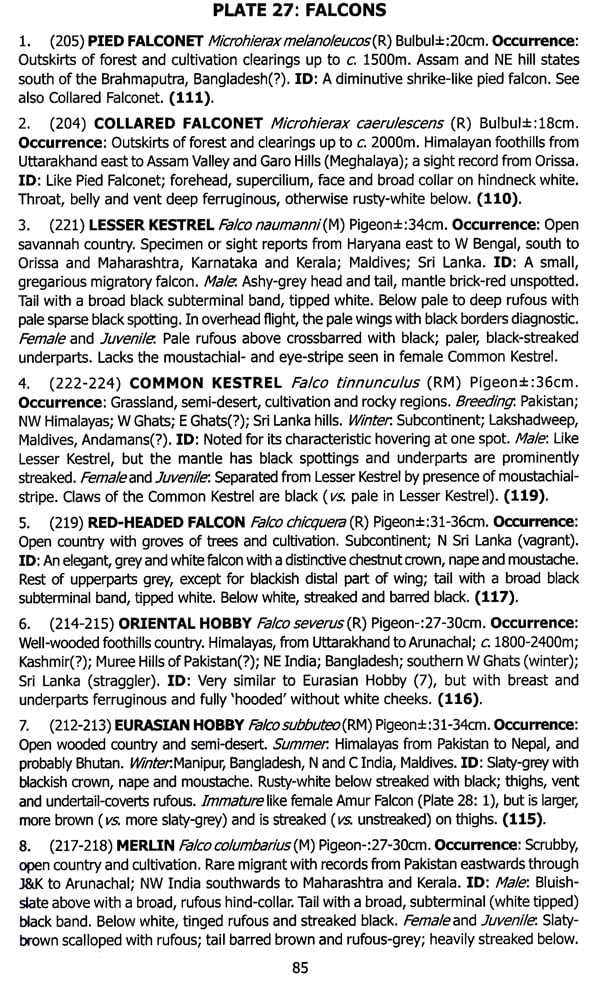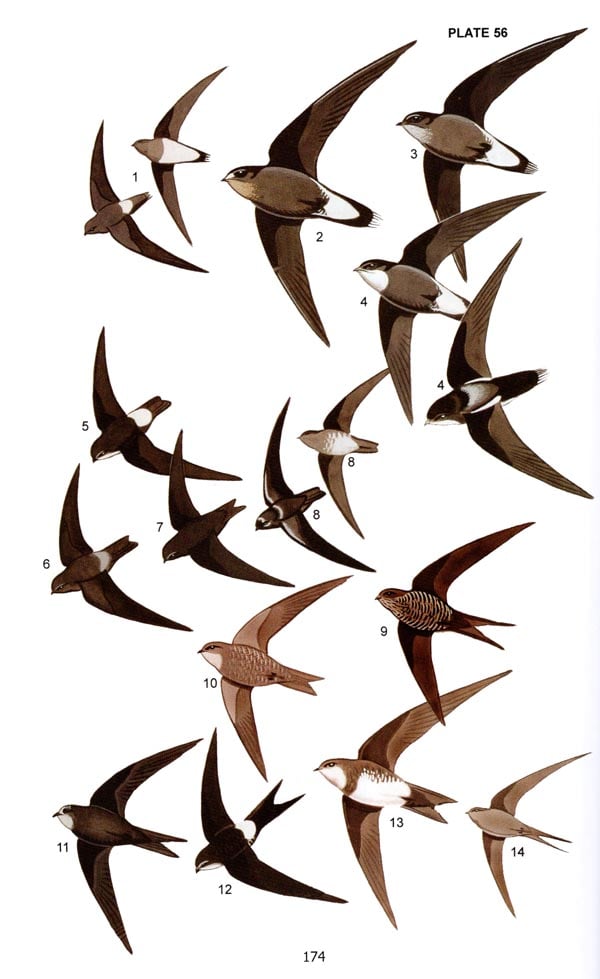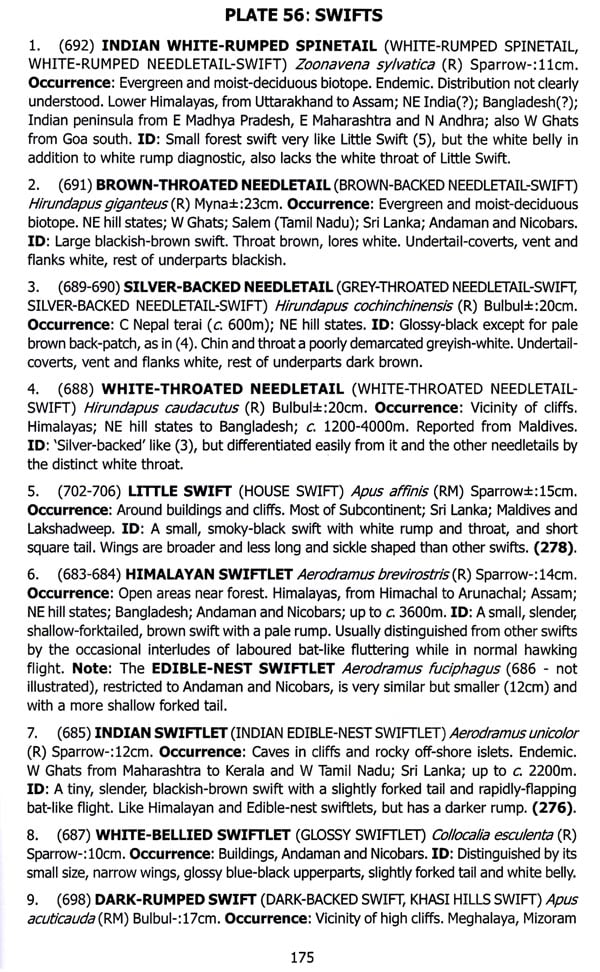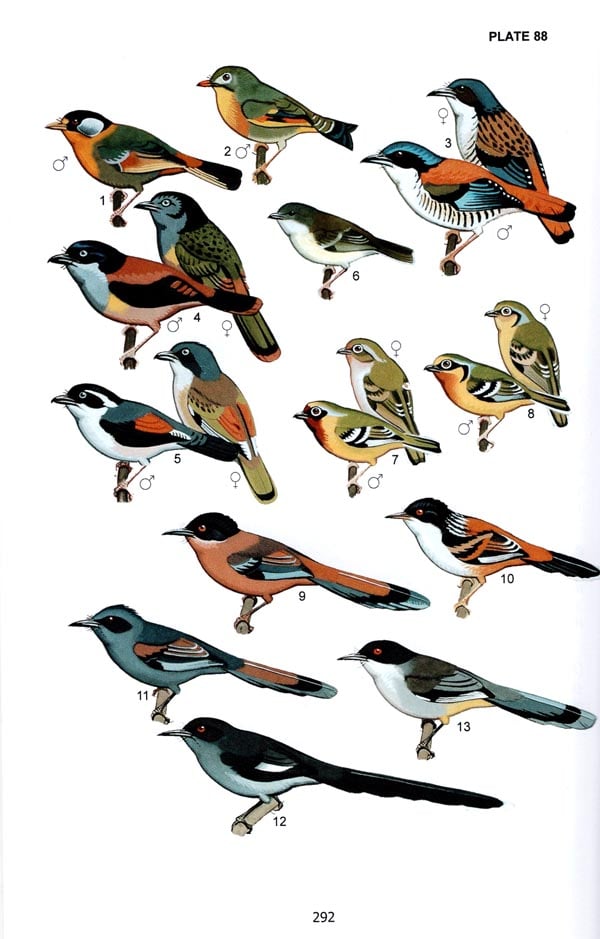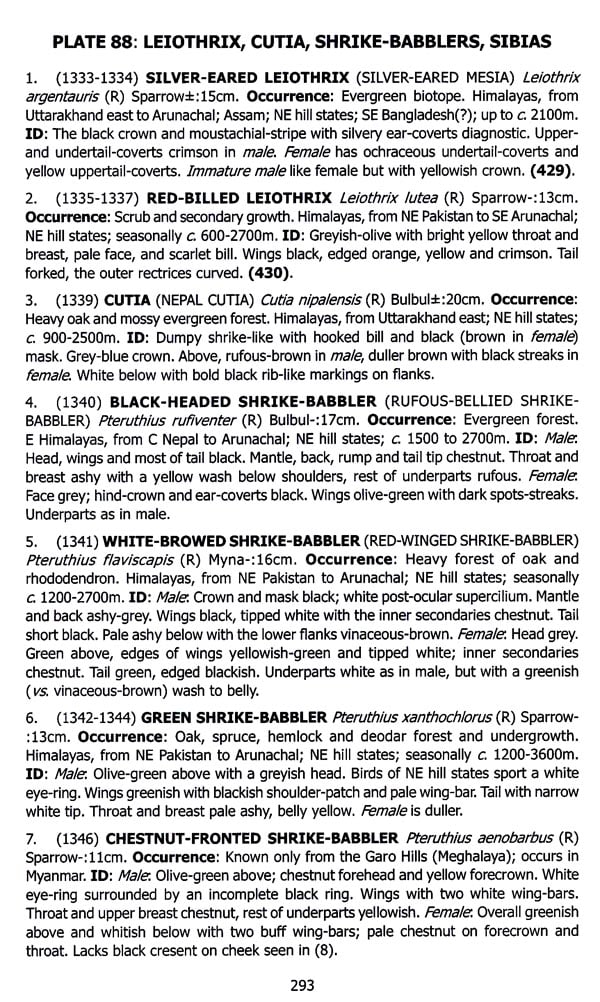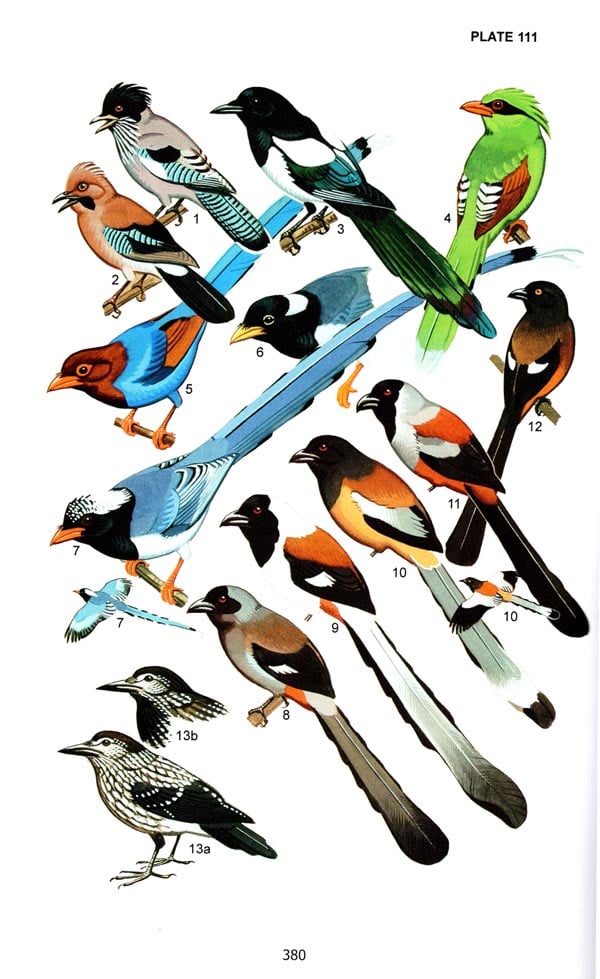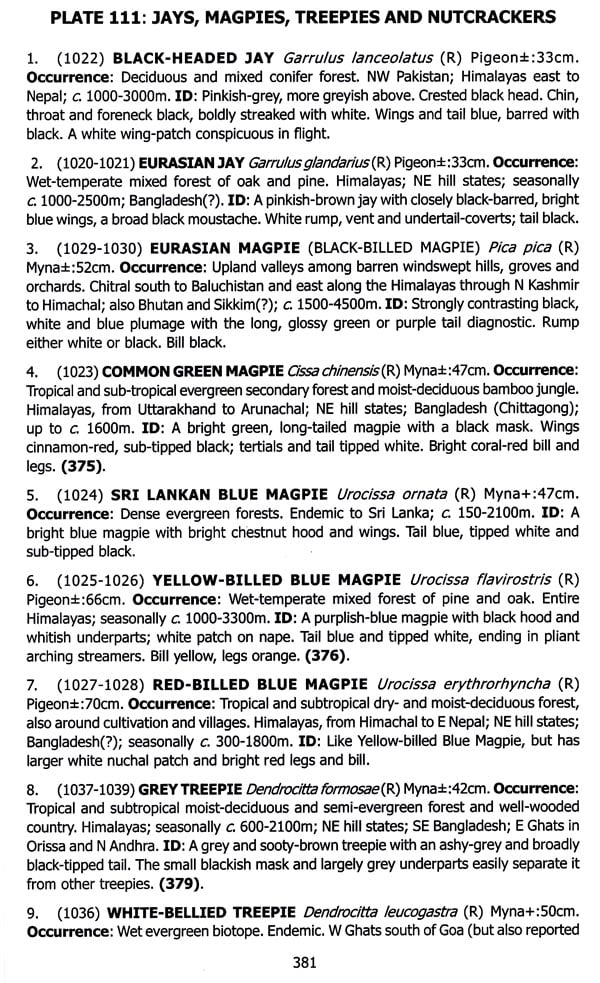
Birds of the Indian Subcontinet (A Field Guide)
Book Specification
| Item Code: | NAR885 |
| Author: | Ranjit Manakadan, J.C. Daniel and Nikhil Bhopale |
| Publisher: | Oxford University Press, New Delhi |
| Language: | English |
| Edition: | 2012 |
| ISBN: | 9780198077237 |
| Pages: | 428 (Throughout Color Illustrations) |
| Cover: | HARDCOVER |
| Other Details | 9.00 X 6.00 inch |
| Weight | 840 gm |
Book Description
Specific identification is the basis of meaningful bird watching as much as of scientific field research. Howsoever significant a field observation, its importance is lost unless the concerned species is correctly identified. For the untutored beginner, good illustrations of birds, preferably in colour, are fundamental. The truth of this was clearly demonstrated by Hugh Whistler's pioneering POPULAR HANDBOOK OF INDIAN BIRDS first published in 1928, in creating and developing an interest in birds and bird watching among the Indian public, where it was practically non-existent before. Although the POPULAR HANDBOOK contained only a few illustrations of the birds described in the text, and fewer still in colour, it triggered an immediate spurt of interest in birds and bird watching, necessitating a second edition of the book in 1935, followed soon by a third edition and a fourth. In 1941, the Bombay Natural History Society (BNHS) first published THE BOOK OF INDIAN BIRDS by Salim Ali describing 181 species of the commoner birds, all of which were shown in colour. The popularity of THE BOOK OF INDIAN BIRDS, largely due to this feature, enabled it to produce further editions every few years, each edition enlarged progressively by the inclusion of a few more species, till the latest, the thirteenth, published in 2002 containing accounts and colour illustrations of 538 species. However, this represents merely a small fraction of our total avifauna, and it was desirable to illustrate many more species if Indian ornithology was to be better served. Salim Ali and S. Dillon Ripley attempted to do this in the 10 volumes of their HANDBOOK OF THE BIRDS OF INDIA AND PAKISTAN (1969-74), which contains colour illustrations of some 900 species of the then 1200+ reported from the Indian subcontinent, therefore still considerably short of the total. Moreover, the plates in the HANDBOOK are spread over 10 separate volumes which make the locating of individual species inconvenient and time-consuming, since even in these plates the illustrations are not in systematic order, family-wise. Under these conditions, the Bombay Natural History Society, through the sponsorship of U.S. Fish and Wildlife Service and Smithsonian Institution published A PICTORIAL GUIDE TO THE BIRDS OF THE INDIAN SUBCONTINENT in 1983. The publication with a set of 95 plates in colour by the well-known American bird painter John Henry Dick, depicting 1241 species of the Indian subcontinent was a landmark publication for Indian Ornithology during its time. THE PICTORIAL GUIDE and the HANDBOOK OF THE BIRDS OF INDIA AND PAKISTAN and THE BOOK OF INDIAN BIRDS were the compendium of books that Indian birdwatchers possessed till the late 1990s. Subsequently, three field guides to Indian birds by European and American birders entered the Indian market. Being the first of its genre, the PICTORIAL GUIDE had its share of flaws, one of which was lack of text to aid birdwatchers in field identification. Another was that enormous changes had taken place in the taxonomy of birds by the turn of the century, making the avian classification order topsy-turvy. Additionally, new bird records for the Indian region and new species, resulting mostly from 'splits' of species were being reported. Range extensions were also being reported with frequency, due to the increasing popularity of birding as a hobby or profession, brought out mainly by the BNHS bird books. Other contributory factors were changes in the features of the Indian landscape due to human interventions like creation of dams, loss of forest cover, desertification, and possibly climate change. Thus, the checklist of 1241 species for the Indian subcontinent had gone up to around 1300 plus species. All these were accompanied by necessary, and sometimes unwarranted, changes in the common (English) names of birds in the new field guides, resulting in confusion on which names to use, necessitating the publication of a standardized checklist of Indian birds by Manakadan and Pittie (2001). To top it all, the long-suspected fraudulent records of Richard Meinertzhagen of the British Era, who even went to the extent of stealing skins from museums and relabeling them with false data, were finally exposed, necessitating deletion of his especially startling new records. Analysis of some of the records of E.C. Stuart Baker, one of the most prolific of the early Indian birders, who depended too much on native fowlers (who sometimes hoodwinked him) for his collection of bird skins and tended to be make statements without solid foundation, also resulted in doubts on the authenticity of some of his records. All these developments clearly pointed to the need to bring out a new edition of the PICTORIAL GUIDE and the result is this publication. As a tribute to the authors of the original publication, we have dedicated the new publication to Salim Ali and S. Dillon Ripley. We hope this guide will be welcomed by the birding community in India and look forward to constructive criticism and comments for incorporation in the next planned edition. Like in the case of the earlier publication, the price of the book has been kept low to enable the widest possible cross-section of people develop an interest in the avian wealth of the Subcontinent, and experience the joys of bird watching
This guide is a revised edition of A PICTORIAL GUIDE TO THE BIRDS OF THE INDIAN SUBCONTINENT first published by Salim All and S. Dillon Ripley in 1983. As in the case of the PICTORIAL GUIDE, this publication deals with the birds of the Indian Subcontinent, viz, the countries of India, Pakistan, Nepal, Bhutan, Bangladesh and Sri Lanka, including the islands of Andaman and Nicobars, Lakshadweep and Maldives. It does not include Afghanistan and the Chagos Archipelago unlike in Rasmussen and Anderton's (2005) publication, BIRDS OF SOUTH ASIA - THE RIPLEY GUIDE.
The earlier publication had 95 colour plates by the well-known American bird painter John Henry Dick. The current edition, renamed the BIRDS OF THE INDIAN SUBCONTINENT -A FIELD GUIDE, uses these plates with additional drawings of raptors in flight, besides a few other species or races. Other changes in the plates include placement of flight diagrams next to illustrations of species and changes in the background and layout of illustrations. With these additions, the guide now has 112 plates containing illustrations of 1,251 species. Additionally, notes on a little over 100 definite/tentative species are provided without illustrations, these having resulted mostly from 'splits' of earlier described species.
Another major change in the guide is that there are species descriptions to aid field identification, which was a major lacuna in the earlier book, as there are quite a few bird species where a pictorial representation is by itself not sufficient, especially to identify similar looking birds. The species descriptions have been kept as brief as possible to enable quick identification, except for species where more detailing is required.
The family sequence follows Rasmussen and Anderton 2005 (BIRDS OF SOUTH ASIA - THE RIPLEY GUIDE) in general, and with regard to taxonomy, either adopts the (many) cases of splits given in the publication or briefs readers about them via notes in the species write-ups. As for English names, we have adopted a mix of the standardized names of Manakadan and Pittie's (2001) and those in THE RIPLEY GUIDE, factoring in changes in taxonomy, birders' acceptance of the English names since the standardized bird list and considering the need for brevity in names. The alternative names used in the recent Indian field guides have also been given within parenthesis after the adopted name, which will be of help to birders referring to more than one field guide.
The basic concept was to have the text facing the Plate. Wherever the text exceeded this limitation, a plate taken from one of the earlier publications was inserted to assure the following plate and text faced each other. The Publications, apart from the Society's Journal, where the 'filler' plates were first published are listed on the page following the half title page.

